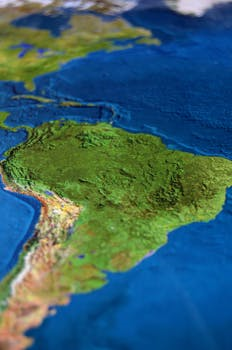Posted: Oct 13, 2017

The intoxicating landscape of South America is diverse and extreme, says Alistair Cooper in this months magazine. Find out some of the most extreme vineyard sites...
It is home to the world’s longest mountain range, the largest river and the driest desert. It is this thrilling playground that is host to a growing band of intrepid winemakers who are stepping into the unknown in the pursuit of uniqueness and freshness.
In recent years, new and existing regions have been explored at a backbreaking pace and boundaries have been pushed – with fascinating and exhilarating results.
Outside these wild extremes lie swathes of vineyards in established regions with proven capability for quality wines. One may wonder, why risk moving beyond their relative security into the great wild unknown?
Winemaker Marcelo Retamal explains: ‘If you consider the great wines of the world – and I don’t mean the most expensive – the most exciting wines are from areas that require risk-taking, always those that have good and bad years. The low-risk areas often produce uninspiring wines.’
South America’s extreme vineyard sites
3,111m The world’s highest commercial vineyard: Colomé’s Altura Máxima in Calchaquí, Argentina. (Nearby El Esteco’s Chañar Punco is at 2,400m.)
2,450m Chile’s highest vineyard is Ayllu, located in the Salar de Atacama. Ayllu is a fascinating social aid project, formed by the Chilean government in conjunction with chemical company SQM. In Toconao, the heart of the Atacama desert, 20 extremely smallscale producers produce individual wines under the shared brand name Ayllu. In 2015, just 7,251 bottles were made across all the producers.
The furthest south
46°S Undurraga’s experimental vineyard at Chile Chico is the world’s most southerly vineyard.
45°S Spain’s Miguel Torres continues a southern expansion in his Chilean business, driven by climate change predictions, recently acquiring 800ha in Aysén, close to Coyhaique.
The driest vineyards
Chile’s Atacama desert is the driest place on earth. Some weather stations in the Atacama have never recorded any rainfall. Meanwhile, Argentina’s Matías Michelini has recently started producing wines in Ica, Peru. Here annual rainfall is just 21mm per year.
The wettest vineyards
2,100mm The average annual rainfall at Villaseñor’s Pinot Noir vineyard in Puelo, Chile’s most southerly commercial vineyard.
Up to 2,500mm The annual rainfall that can be experienced at Chubut, in Argentinian Patagonia.
The hottest
48.9°C The highest temperature recorded in Salta, Argentina (1904).
44.9°C The highest temperature recorded in a Chilean wine-growing region: Quillón, Itata (2017).
The coldest
-32.8°C The lowest temperature recorded in a South American wine region: Sarmiento, Chubut (1904).
Alistair Cooper is a wine writer, broadcaster and consultant.
By Decanter Staff
October 10, 2017
Source: Decanter.com
Go-Wine's mission is to organize food and beverage information and make it universally accessible and beneficial. These are the benefits of sharing your article in Go-Wine.com


The Wine Thief Bistro & Specialty Wines is a locally owned small business in downtown Frankfort, IL offering world class wines in a relaxed, casual gathering spot for friends and family. Offering world class virtual tastings and touchless carryout.
https://www.twtwineclub.com/aboutus
Go-Wine 25 Great Wineries in US selection prioritizes quality, value and availability.
www.go-wine.com/great-wineries-in-america
Tasting wine is a nice experience, but visiting the places in which wine is made is a magic moment. Available in New York City for touchless pickup.